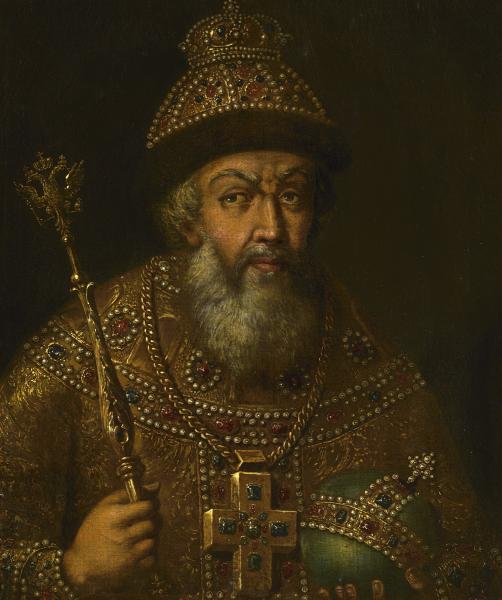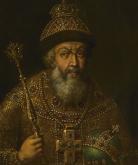Portrait of Tsar Ivan IV the Terrible
Before mid-18th century
- Period Early 19th century
- CategoryPortrait
- Share
Tsar Ivan IV (the Terrible) (1530–1584)
Ivan IV was the son of Grand Prince Vasily III, of the House of Rurik, and Elena Glinskaya, who came from a line of Lithuanian knights. He was crowned in 1547 as the first “Tsar of All the Russias”. With the participation of a narrow circle of close associates he carried out a number of reforms in the 1550s. At the first Zemsky Sobor (Assembly of the Land) in 1549 a law code for the whole of Russia, the Sudebnik, was adopted and a regular army of streltsy – people under arms who carried out permanent military service for pay – was established. The Stoglavy Sobor (Hundred Chapters Assembly) was summoned in 1551 to unify religious rites and deal with matters of canonisation. Ivan conducted successful campaigns to absorb the Khanates of Kazan (1552) and Astrakhan (1556), as well as Bashkiria (1557). He was defeated in the Livonian War to gain access to the Baltic (1558–1583). Clashes with boyar circles opposed to Ivan led to the formation in 1565 of the oprichnina (from the Old Russian oprich, meaning “special” or “apart”) when, after separating off part of the country and the troops under his own personal rule, the Tsar took extreme measures to crush the old boyar families so that power could be further centralised. Ivan supported the development of culture, the building of churches and enlightenment. According to various sources he had as many as seven wives. He was called “Terrible” (Grozny) by the people because of the savage executions of political opponents. Historiography has given him an extremely ambiguous evaluation.
The reign of the last of the Rurik dynasty, Feodor Ioannovich, the second son of Ivan IV by his first wife, Anastasia Romanovna Yuryeva-Zakharina, which began in 1584, saw the final unification of Western Siberia with Russia, the publishing of a new law code and the establishment of the Russian Patriarchate, both in 1589. During this period the internal political fighting worsened due to the rise within the court of the boyar Boris Godunov, whose sister the Tsar had married.
This portrait of Ivan the Terrible was painted roughly a century and a half after his death, and relies mainly on historical and literary descriptions. It is thus more an imagined, rather than a genuine, representation of the Tsar.

